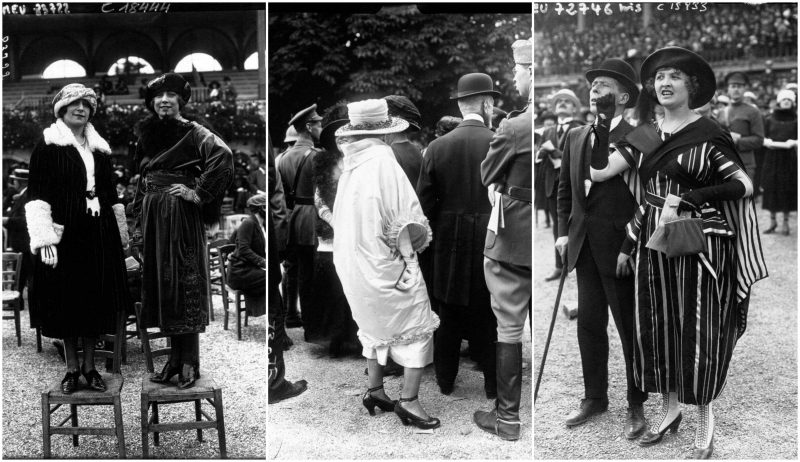Paris is one of the fashion capitals of the world, and since forever a home of the most inspiring and exciting fashion style.
The Longchamp racecourse is located on the banks of the Seine River, in Paris, this was a place where the race meetings were held and in 1910 the first fashion show. At the beginning of the 20th century, the women had begun to express a fashion freedom and bold approach to the garments they wore.
Here is how the Fench Sartorialists captured the Parisian Haute Couture women.
All photos by Europeana
![1910 Prix du conseil municipal [deux élégantes]](https://www.thevintagenews.com/wp-content/uploads/sites/65/2015/05/11.jpg)



During the early years of the 1910s in Paris the fashionable silhouette became much more lithe, fluid and soft than in the 1900s. When the Ballets Russes performed Scheherazade in Paris in 1910, a mania for Orientalism ensued.
The couturier Paul Poiret was one of the first designers to translate this vogue into the fashion world. Poiret’s clients were at once transformed into harem girls in flowing pantaloons, turbans, and vivid colors and geishas in exotic kimono. The Art Deco movement began to emerge at this time and its influence was evident in the designs of many couturiers of the time.
Simple felt hats, turbans, and clouds of tulle replaced the styles of headgear popular in the 1900s (decade). It is also notable that the first real fashion shows were organized during this period in time, by the first female couturier, Jeanne Paquin, who was also the second Parisian couturier to open foreign branches in London, Buenos Aires, and Madrid.


![1911 Fashions at Longchamps [Elegant young woman]](https://www.thevintagenews.com/wp-content/uploads/sites/65/2015/05/71.jpg)


The extravagances of the Parisian couturiers came in a variety of shapes, but the most popular silhouette throughout the decade was the tunic over a long underskirt. Early in the period, waistlines were high (just below the bust), echoing the Empire or Directoire styles of the early 19th century. Full, hip length “lampshade” tunics were worn over narrow, draped skirts. By 1914, skirts were widest at the hips and very narrow at the ankle. These hobble skirts made long strides impossible.
Waistlines were loose and softly defined. They gradually dropped to near the natural waist by mid-decade, where they were to remain through the war years. Tunics became longer and underskirts fuller and shorter. By 1916 women were wearing calf-length dresses.
When the Paris fashion houses reopened after the war, styles for 1919 showed a lowered and even more undefined waist

















Two of the most influential fashion designers of the time were Jacques Doucet and Mariano Fortuny. The French designer Jacques Doucet excelled in superimposing pastel colors and his elaborate gossamery dresses suggested the Impressionist shimmers of reflected light.
His distinguished customers never lost a taste for his fluid lines and flimsy, diaphanous materials. While obeying imperatives that left little to the imagination of the couturier, Doucet was nonetheless a designer of immense taste and discrimination, a role many have tried since, but rarely with Doucet’s level of success.
